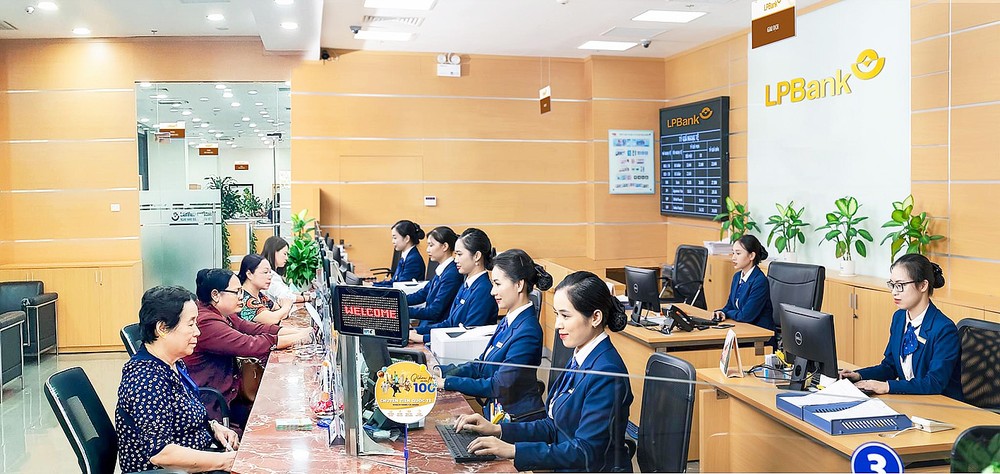
Coordinating for efficient growth
According to the SBV, as of August 26, credit across the system had increased by 6.63 percent compared to the end of 2023, with an estimated additional VND900 trillion in total credit for the economy during the first eight months of 2024. However, this growth represents only about 44 percent of the year’s target.
In Ho Chi Minh City, data from the city’s Statistics Office shows that credit growth by the end of August 2024 is estimated to have risen by 4.5 percent compared to the end of 2023, an 11.4 percent year-on-year increase. The office observed that despite stronger-than-expected economic growth and continued low lending interest rates, credit in Ho Chi Minh City has not rebounded as anticipated.
In response to the slow overall credit growth, the SBV has recently adjusted the credit limits for credit institutions. From August 28 onward, any credit institution achieving at least 80 percent of the SBV’s annual credit growth target will automatically have its credit limit expanded, based on its ranking, without needing to submit a request.
“This incentivizes banks to compete more aggressively for credit limits and market share in the remaining months of the year. Consequently, commercial banks will seek ways to boost lending, improve capital flow, and enhance access to credit for businesses and individuals,” noted an expert from VPBS Securities Company.
Unlike in previous years, beginning in 2024, the SBV set a uniform credit growth target of 15 percent for all credit institutions to facilitate early capital disbursement from the first quarter to support economic growth. However, credit growth has been uneven among banks during the first half of the year.
Data from VPBS Securities Company shows that many commercial banks, such as ACB, HDBank, Techcombank, MB, and VPBank, achieved credit growth rates between 10 percent and 15 percent. Meanwhile, some banks saw lower growth, ranging from 4 percent to nearly 6 percent, including PVCombank, SHB, VIB, and TPBank. ABBank even recorded a negative growth rate of 7 percent.
Channeling capital into production and business
To meet the annual growth target of 15 percent, credit institutions need to increase credit by 8.37 percent from now until the end of 2024, which means injecting an additional VND1.13 quadrillion into the economy. However, beyond expanding credit limits, the SBV has instructed credit institutions to ensure credit growth is safe, effective, and sustainable while limiting the increase and emergence of bad debts. Credit should be directed toward production sectors and priority areas, and tightly controlled in high-risk fields.
“One of the SBV’s primary objectives for the remainder of 2024 is to steer credit capital into sectors that drive economic growth, such as exports, investment, and consumption,” said SBV Deputy Governor Dao Minh Tu. “Notably, the SBV has issued Circular 12/2024, allowing credit institutions to exempt customers from providing feasible capital use plans for loans under VND10 million, aiming to stimulate greater involvement from commercial banks in consumer lending.”
Assoc. Prof. - Dr. Nguyen Huu Huan from the Ho Chi Minh City University of Economics expects that in the final months of the year, the banking sector's credit outstanding will gradually improve due to higher capital demand during the peak business and consumption season. However, given that demand has not surged significantly and the economy's ability to absorb capital remains weak, achieving a 15 percent credit growth rate will be a major challenge. To drive credit growth, it is crucial for the banking sector to not only implement credit stimulus programs and reduce loan interest rates but also to boost market demand, including export and domestic markets.
Recently, commercial banks have gradually worked to lower interest rates and boost lending activities. They continue to offer preferential interest rate packages to support production and business activities and stimulate consumption. Specifically, OCB provides loans to import-export enterprises at rates as low as 5.5 percent per annum; BVBank offers early repayment loans for production and business sectors and consumption with rates ranging from 3.49 percent to 5.49 percent per annum; and VPBank offers online mortgage loans with limits up to 100 percent of the collateral’s value, up to VND20 billion, to enhance capital access for small and medium-sized enterprises.
Meanwhile, securities firms remain optimistic, predicting that credit growth for 2024 will be around 14 percent. Banks that have already achieved 80 percent of their credit room, such as ACB, HDBank, LPBank, and Techcombank, are expected to increase their limits to 18-18.7 percent.
“If banks reach 90 percent of their assigned credit room by year-end, the SBV is unlikely to raise its policy rates. With GDP growth projected at 6 percent, overall credit growth in the sector could reach 14.83 percent,” forecast experts from VPBS Securities Company.
MBS Securities Company also predicts that credit growth will reach 14 percent in 2024, assuming a GDP growth rate of 6.5 percent for the year. “Some commercial banks may sacrifice profitability by lowering loan interest rates to boost credit growth. Retail lending is expected to recover more robustly in the latter part of the year, driven by consumer finance, credit cards, and auto loans due to the impact of lower interest rates. In the corporate sector, import activities and infrastructure construction will be the key drivers of credit growth in the second half of 2024,” explained an expert from MBS Securities.
According to SBV Deputy Governor Dao Minh Tu, the SBV will take decisive action against commercial banks with low credit growth, as these banks were given credit limits at the start of the year. Banks that do not utilize their allocated limits will have their excess credit reallocated to those banks capable of increasing their lending. This adjustment in credit allocation aims to ensure that banks channel funds into the economy more effectively and responsibly.
In a recent meeting with the SBV, Prime Minister Pham Minh Chinh set a credit growth target of around 15 percent for 2024. To support economic growth, the banking sector must develop strategies to channel capital into production and business. Credit management should align with macroeconomic trends and inflation, address the economy’s capital needs, and reallocate unused credit growth targets from credit institutions that do not fully utilize them to those with the potential for increased lending.












)

)









